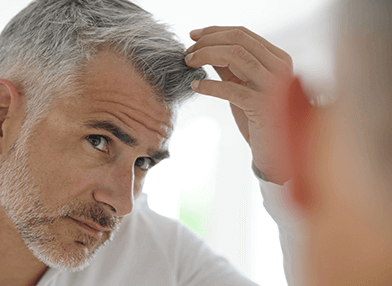Hair loss and seasonal change are related. People may experience seasonal hair loss when the shift of temperature becomes a stressor for the hair.
Seasonal hair loss is a natural cycle and is temporary!
Seasonal hair loss is quite common. Actually, it is a natural and physiological event, as many living beings in Nature follow seasonal cycles, such as plants, the skin, and also hair. Hair has many functions, including thermoregulation and protection and may assist in stabilizing the temperature of the brain[i]. Hair also protects from the weather and external factors, including UV radiations. Like animals, human beings shed naturally.

The hair life cycle consists of three main phases and is also known as ACT cycle.
A: The Anagen (growth)
C: the Catagen (or transition or regression)
T: the Telogen (or rest)
When the seasons change, some people experience hair loss. In most cases hair loss occurs mainly in spring and fall, when the shift of temperature becomes a stressor for the scalp and follicles.
Seasonal hair loss can be attenuated by taking care of hair health constantly during the year and developing some simple habits. First, a healthy diet is essential to provide the hair with the correct amount of nutrients, vitamins and minerals which play a key role in hair life cycle. If appropriate, periodical supplementation with a specific food supplement can be useful, especially during seasonal changes. Moreover, it is very much important to use hair care products with a gentle and non-irritating formulation, with a soothing effect, for a specific action against the triggering factors associated with seasonal changes.
Laboratoires Bailleul, a leader in the treatment of hair loss, has developed a complete range of dermatological treatments, cosmetic products and food supplements. These specific treatments enhanced by innovative active ingredients for hair health help to address (or rather prevent) also seasonal hair loss.
[i] Yesudan P., Human Hair – An Evolutionary Relic? Int J Trichology. 2011 Jul-Dec; 3(2): 69.




